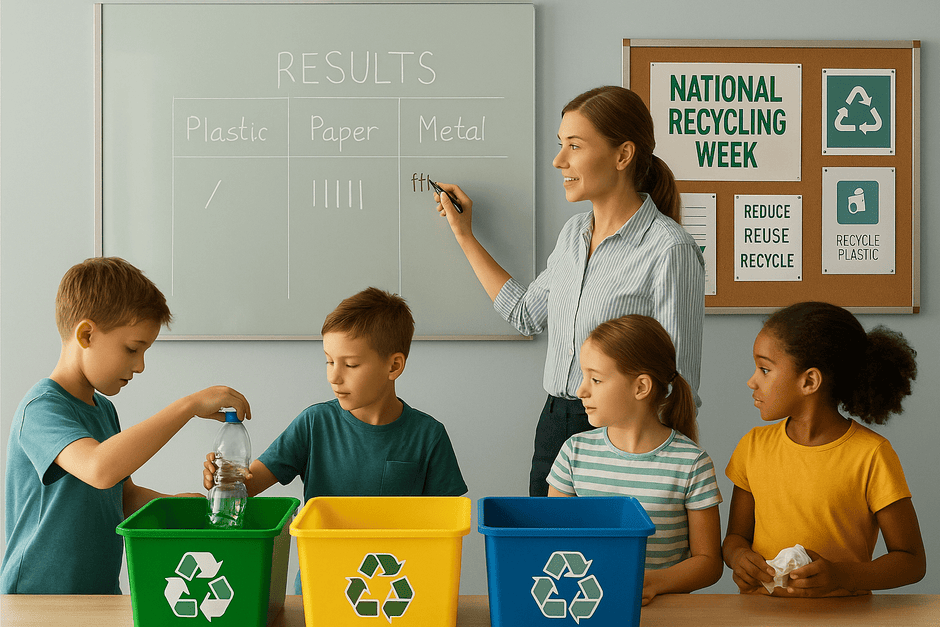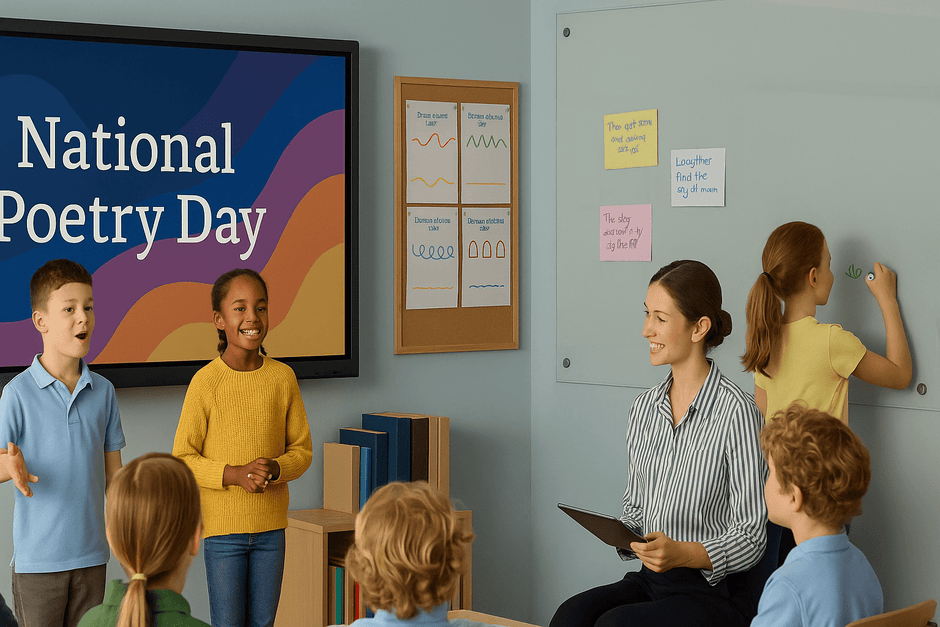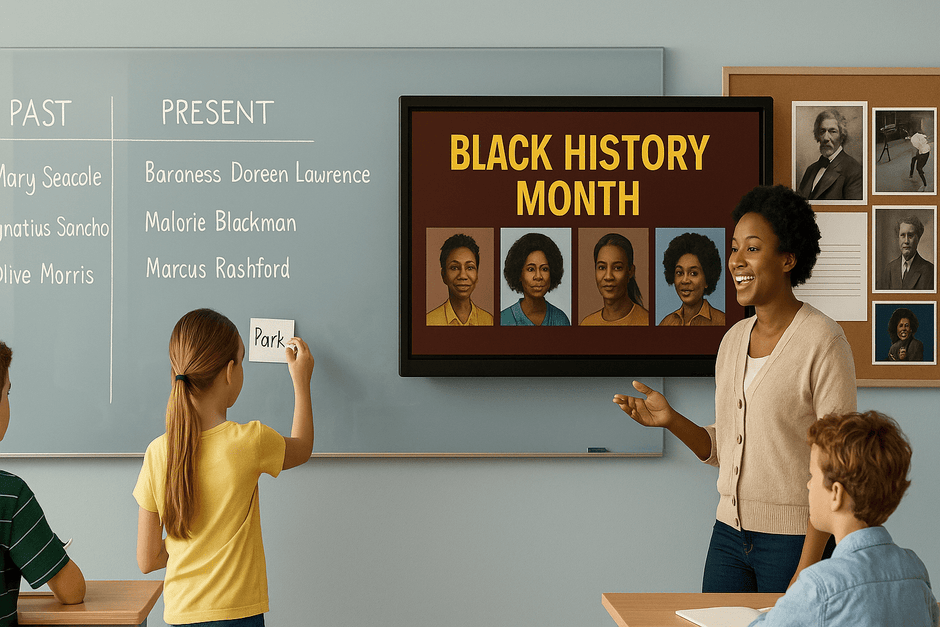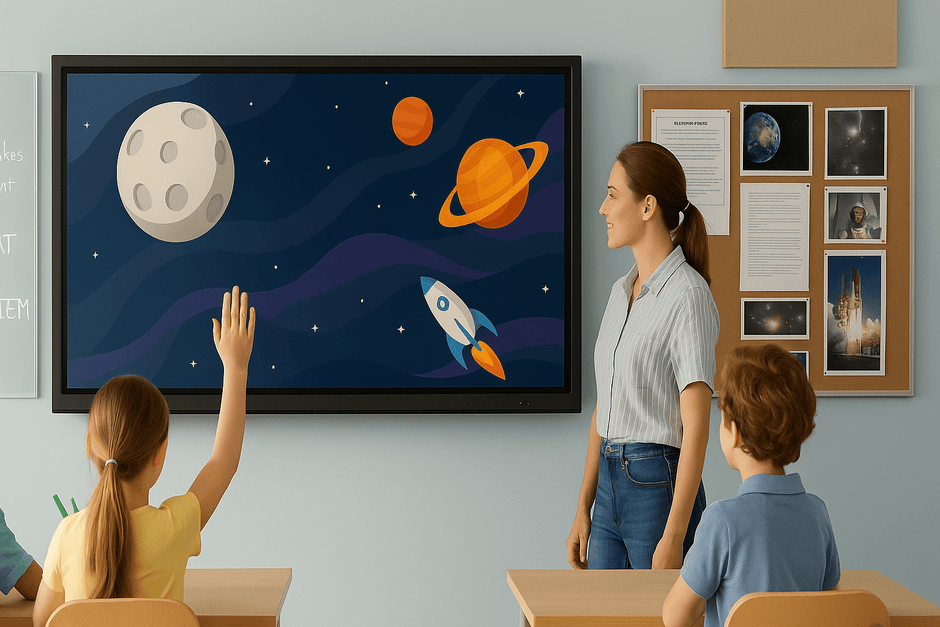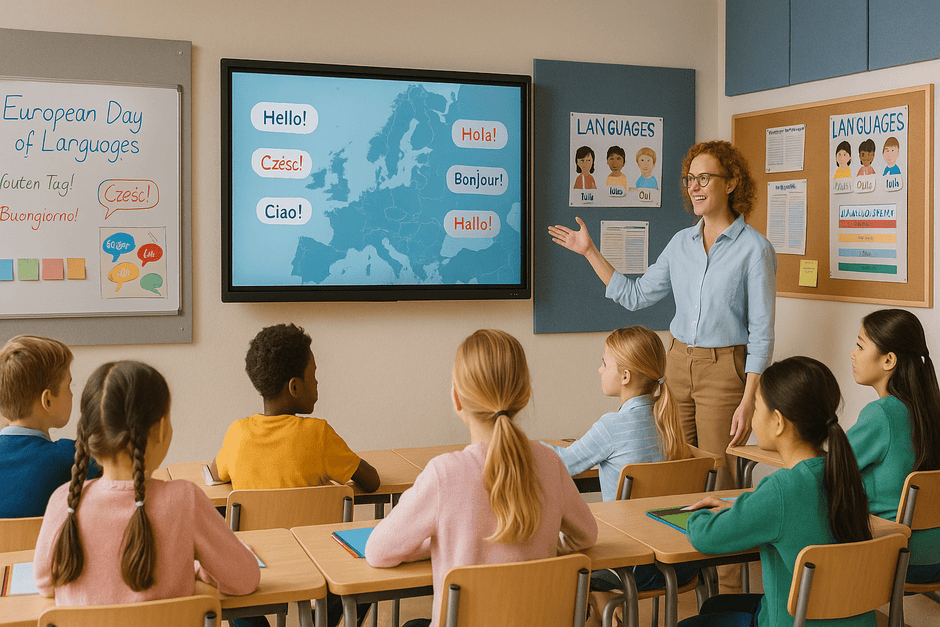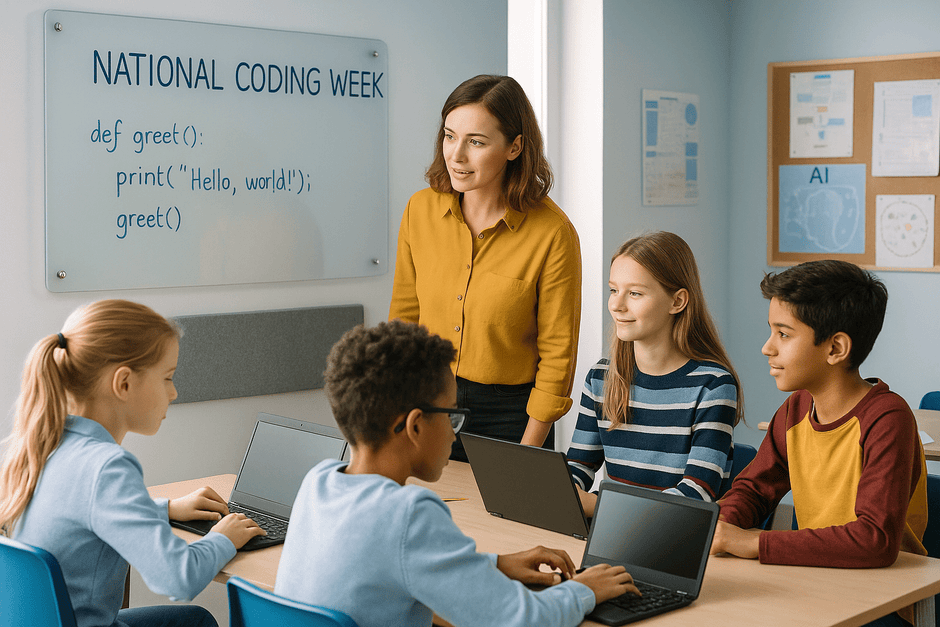Emergency Services Day (999 Day) falls on 9 September each year. It’s a brilliant chance for schools to celebrate the people who keep our communities safe – police, fire and rescue, ambulance and NHS teams, coastguard, RNLI, mountain rescue, and countless volunteers. Our guide gives you a complete, ready-to-use plan for marking the day in a meaningful, curriculum-linked way, with lesson ideas for every age group, inclusive classroom tips, and simple ways to involve your whole school.
At Presentation Spaces, we believe high-quality teaching tools make these moments more engaging and more inclusive. Every product we sell is hand-picked by our MD, Joe for suitability, durability, and value in real school environments. We also offer free dependable delivery on most items and we won’t be beaten on price. If you need advice, just ring 01382 913 913 or email info@presentationspaces.co.uk – our team will help you plan the perfect setup for your activities.
Why celebrate Emergency Services Day in school?
- Citizenship and PSHE: Build respect, gratitude, and an understanding of public service.
- Cross-curricular learning: Link to English, Science, Geography, Computing, Design & Technology, and History.
- Wellbeing and inclusion: Real-life role models promote resilience, teamwork, and care for others.
- Community connection: Involve local services in assemblies or careers talks and strengthen relationships.
Below you’ll find a flexible plan you can adapt to your setting – from a single themed lesson to a full-day celebration with whole-school displays and assemblies.
A simple plan for the day
- Morning assembly: Introduce 999 Day, highlight different services, and set the tone of gratitude. Display pupil-made posters on a large screen or board.
- Lesson blocks: Run one or two age-appropriate activities (ideas below). Encourage classes to share outcomes using a visualiser or interactive display.
- Showcase & Thank You Wall: Curate work on corridor noticeboards and invite parents or visitors to add messages of thanks.
- Community link: If possible, host a short visit from local services, or connect via video call.
Make it inclusive: Use pastel-toned writing surfaces and clear, structured displays to reduce visual load and support learners with SEND. Keep acoustics in mind during assemblies – acoustic panels can improve speech clarity and reduce listening fatigue in large spaces, supporting the intent of BB93.
Lesson ideas for every key stage
EYFS and Key Stage 1
1) People Who Help Us - picture parade
Pupils create drawings of different emergency roles (police, firefighter, paramedic, coastguard). Ask them to label equipment or vehicles in phonics-friendly words.
How to present: Use a visualiser (AVerVision F17+) to share each picture with the whole class and prompt vocabulary (helmet, siren, rescue). Display finished work on a bright, central noticeboard.
2) Dress Like a Hero - role play corner
Set up a role play area with tabards or hats. Pupils practise calling 999, saying their address, and describing an emergency in simple language.
How to present: Script steps on a large whiteboard for modelling and repetition. Use mobile boards to bring the instructions closer to the play area.
3) Safety Sorting - what’s safe, what’s not?
Use images (e.g. crossing with lollipop person vs. running into the road) and ask pupils to sort into “safe” and “not safe”.
How to present: On a double-column layout using a rollerboard, pupils physically move images to the correct side.
Key Stage 2
4) Thank-You Letters to Real-Life Heroes
Discuss different roles within the emergency services. Pupils write short, sincere thank-you letters demonstrating understanding of the role and its challenges.
How to present: Model structure live with a visualiser. Curate final letters on a corridor noticeboard and send copies to local stations.
5) Map the Response - who helps where?
Using UK maps, pupils plot where emergency services are based and discuss how geography affects response (coastguard coverage, rural ambulance travel times).
How to present: Layer printed maps under a visualiser to annotate live. Summarise key points on a large whiteboard or glassboard.
6) Design a Rescue Poster - public information
Pupils create PSHE posters on water safety, fire safety, or calling 999 correctly.
How to present: Show exemplars on an interactive screen and display finished posters on noticeboards around school.
Key Stage 3–4
7) Debate: How should communities prioritise emergency service funding?
Teams prepare short arguments and present to the class. Encourage use of statistics, local context, and counterarguments.
How to present: Use height-adjustable interactive setups so every group can present comfortably. The Flexi-View Interactive Column Board provides smooth, manual height adjustment and an accessible display position for mixed-height presenters.
8) STEM Challenge: Build a rescue solution
Students prototype a simple tool or app that solves a real problem (e.g. flood alert signage, basic triage flowchart, coastal rescue drone concept). They pitch the design with sketches and a short demo.
How to present: Use a visualiser to show sketches and models clearly. Capture team ideas across a bank of whiteboards or a rollerboard to keep iterations visible.
9) Media Literacy: Emergency messaging and misinformation
Analyse how accurate information is shared during incidents. Compare trusted sources to rumours and discuss the role of emergency services in communications.
How to present: Use an interactive screen and the Flexi-View system for accessible, whole-class analysis.
Post-16
10) Careers Carousel with Community Partners
Invite representatives or use recorded interviews from emergency service roles. Students rotate between stations to ask questions on training pathways, apprenticeships, and volunteering.
How to present: Use mobile writing surfaces for breakout notes and a central interactive screen for session timings and Q&A.
11) Ethical Case Studies
Students explore real dilemmas (resource allocation, triage ethics, risk to rescuers). They present a reasoned stance with references.
How to present: A multi-surface approach works well here – combine glassboards for mind-mapping with a visualiser for document evidence and the Flexi-View for final slides.
Whole-school ideas
- The Big Thank You Wall: A central corridor noticeboard filled with postcards, poems, and artwork. Invite community contributions too.
- Emergency Services Assembly: Use an interactive display or projection for short video messages. Improve clarity with acoustic panels that support the aims of BB93 by reducing reverberation and improving speech intelligibility.
- Water Safety Week with RNLI focus: Geography and PSHE link. Pupils design simple, localised safety guides for rivers, canals, or coasts.
- First Aid Basics: In partnership with local services or reputable training resources. Use visualisers for live demonstrations of recovery position or bandaging techniques.
- Community Careers Boards: Create a rotating feature on noticeboards with profiles, training routes, and volunteering opportunities.
Make it inclusive for every learner
Emergency Services Day should be accessible and engaging for all pupils. A few practical adjustments go a long way:
- Reduce glare, increase focus: Opt for soft-tint writing surfaces. Explore our Chameleon Writing collection and see our detailed guide to pastel whiteboards for inclusive classrooms.
- Improve speech clarity: Assemblies and large spaces benefit from better acoustics. See Zen Impacta for impact-resistant acoustic panels ideal for sports halls and multi-use spaces, or browse all acoustic solutions.
- Flexible height and access: For mixed-height classes and wheelchair users, present with Flexi-View Interactive Column Board for smooth manual height adjustment and ergonomic positioning.
- Minimise visual clutter: Use clear, well-organised noticeboards and consistent colour-coding to support processing and attention.
Recommended tools for your 999 Day activities
Every item below is selected for reliability and ease of use in busy classrooms. We know schools need kit that works first time, every time.
- AVerVision F17+ Visualiser - live modelling, show-and-tell, and document sharing.
- Flexi-View Interactive Column Board - height-adjustable interactive presenting for all ages.
- Noticeboards - curate Thank-You Walls, safety posters, and careers profiles.
- Whiteboards and Rollerboards - big, flexible writing space for group tasks.
- Glassboards - durable, low-ghosting surfaces for high-impact displays.
- Mobile Surfaces - take learning to the group table, the hall, or the corridor.
- Zen Impacta and Acoustic Solutions - clearer assemblies and calmer classrooms aligned with the spirit of BB93.
Quick comparison – match your activity to the best tool
| Activity | Recommended Presentation Spaces product | Why it helps |
|---|---|---|
| EYFS/KS1 picture parade and role-play | AVerVision F17+ Visualiser, Noticeboards | Share pupil work instantly and celebrate outcomes on a central display wall. |
| Safety sorting - class discussion | Rollerboards, Whiteboards | Large, flexible writing areas for sorting tasks and whole-class participation. |
| KS2 thank-you letters and map studies | Visualiser, Glassboards | Model writing live; annotate maps clearly and neatly for everyone to see. |
| KS3–4 debate and media literacy | Flexi-View Interactive Column Board | Accessible height adjustment for confident presenting and better visibility. |
| STEM rescue challenge | Visualiser, Whiteboards | Show prototypes under the camera; capture iterations across big writing surfaces. |
| Whole-school assembly and film clips | Interactive Screens, Acoustic Solutions | Crisp, accessible visuals with improved speech intelligibility in large spaces. |
| Careers carousel | Mobile Surfaces, Noticeboards | Flexible breakout notes and a rotating careers hub for pathways and apprenticeships. |
| Thank-You Wall and public information posters | Noticeboards | Durable, tamper-resistant display options for high-traffic areas. |
| Inclusive teaching – reduced glare and cognitive load | Chameleon Writing (pastel-toned) | Softer colour surfaces support focus and reduce visual stress for SEND learners. |
| Height-inclusive presenting | Flexi-View | Comfortable presenting for pupils and staff of different heights, including wheelchair users. |
Cross-curricular extensions
- English: Interview scripts with a firefighter or paramedic; persuasive letters to promote water safety.
- Maths: Reading timetables, measuring response times, simple risk probability discussions.
- Science: Materials in protective equipment; combustion and fire triangles; first-aid basics.
- Geography: Floodplains and coastal risk; mapping emergency coverage.
- Computing: Create a simple “call 999” decision tree; storyboard a public information video.
- D&T: Prototype signage, wearable reflectors, or simple rescue devices and packaging.
Practical tips for a smooth, safe day
- Safeguarding and consent: If visitors attend or you share images, follow your school’s policy and consent procedures.
- Accessibility: Use pastel writing surfaces, captions for videos, and clear visual structure for tasks.
- Acoustics: In echoey halls, add soft furnishings or consider acoustic treatments aligned with BB93 to improve speech clarity.
- Clear signage: Use noticeboards to signpost schedules, rooms, and assembly seating.
- Plan B: If a community visitor is called away, switch to pre-recorded clips and student-led presentations using the visualiser.
Ready-to-use assembly outline (10–15 minutes)
- Welcome & purpose - why Emergency Services Day matters.
- Spotlight on services - short slides on police, fire, ambulance/NHS, coastguard/RNLI, volunteers.
- Real story - a short pupil-read case and what we can learn.
- How to help - safety habits, calling 999 appropriately, volunteering as we grow up.
- Thank you - unveil the Thank-You Wall and invite contributions.
Tech setup: Present on an interactive screen at a comfortable height for the speaker using Flexi-View. Improve clarity in the hall with impact-resistant acoustic panels if needed.
Keep the momentum going after 9 September
999 Day can be the start of a wider focus on community, safety, and wellbeing. Keep a rotating “Heroes in Our Community” feature on your noticeboards. Build a termly careers spotlight with the mobile writing surfaces to share apprenticeship routes and volunteering opportunities. For classrooms that double as assembly or multi-use spaces, acoustic solutions can make everyday teaching and large-group presentations clearer and calmer for everyone.
We’re here to help
Need a quick steer on the right setup for your activities, or want an installation quote? We’ll match or beat any like-for-like price and make sure you get the right solution first time. Explore the ranges below or contact our friendly team:
- AVerVision F17+ Visualiser
- Flexi-View Interactive Column Board
- Noticeboards and Whiteboards
- Rollerboards and Glassboards
- Mobile Surfaces and Interactive Screens
- Zen Impacta and all Acoustic Solutions
- Inclusive surfaces: Chameleon Writing (pastel-toned)
Call 01382 913 913 • Email info@presentationspaces.co.uk • or browse our collections here.
About Presentation Spaces
We provide high-quality, innovative display and acoustic products for schools, colleges, and universities. We focus on real teaching and learning challenges – inclusion, pupil wellbeing, and classroom performance – and we only sell products we’d choose for our own classrooms. Free dependable delivery on most items, expert support, and hand-picked ranges mean you can spend less time researching and more time teaching.




